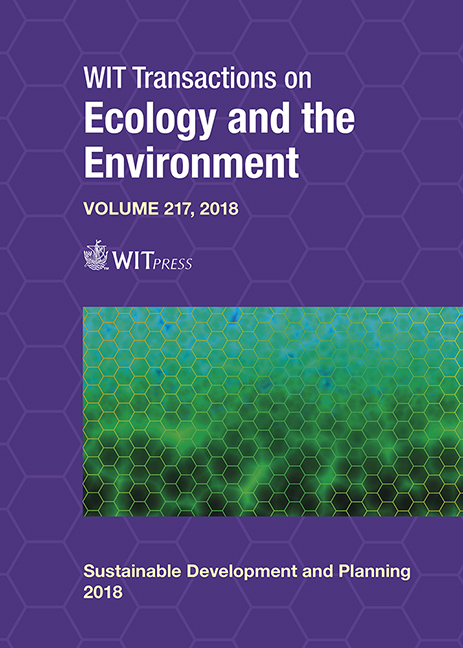PASSIVE ADAPTIVE STRATEGIES FOR THE OPTIMISATION OF COMFORT AND ENERGY DEMAND IN TRADITIONAL AND CONTEMPORARY BUILDINGS IN HOT, HUMID CLIMATES
Price
Free (open access)
Transaction
Volume
217
Pages
11
Page Range
39 - 49
Published
2018
Size
653 kb
Paper DOI
10.2495/SDP180041
Copyright
WIT Press
Author(s)
UDO DIETRICH, LAURA GARCIA RIOS
Abstract
Salvador, Brazil was chosen as the location for a hot and humid climate. Temperatures lay in the range between 25 and 32�C in the hot period (around December) and 22 and 27�C in the cooler one (around June). An assessment of the outdoor temperatures with adaptive comfort model EN 15251 shows that with only natural ventilation there are good chances to reach comfort. Overheating may arise from internal use, artificial light and solar heat transfer through windows as well as through opaque walls and roofs (exterior surfaces absorb solar radiation, construction heats up and the high-temperature transfers remarkably through the construction to the interior). Representative local traditional and contemporary buildings were selected and analysed with transient thermal simulation. Results show that the heat transfer through the constructions is in case of overheating the dominant component. In both buildings, the last floor under the roof overheats. Only with an improvement of the construction (by adding layers that contribute to thermal insulation) comfort can be reached. The intermediate floor in the traditional building with thick adobe walls (60 cm) behaves very well, while the contemporary building with thin concrete walls (10 cm) overheats. Comfort can be reached only by bringing the wall into shadow (cladding) or optimizing the construction by adding insulation or replacing concrete with hollow bricks, increased natural (shaft) ventilation and shading of the windows. Positively it has to be said that, in the local contemporary architecture itself with building shape, (moderate) size and placement of windows, shading system, cross ventilation is not a fundamental obstacle to reach comfort. In other countries, the trend to bigger windows leads without AC in any case already to discomfort. But the tendency to construct cost-optimized, to use “modern” materials like concrete (without protecting cladding or insulation) and the hope that users will install AC has led to non-optimal constructions. Detailed recommendations for the improvement of roof and wall constructions are given in the paper.
Keywords
hot and humid climate, adaptive comfort model, natural ventilation, heat transfer through constructions, transient thermal simulation, traditional architecture, contemporary architecture





